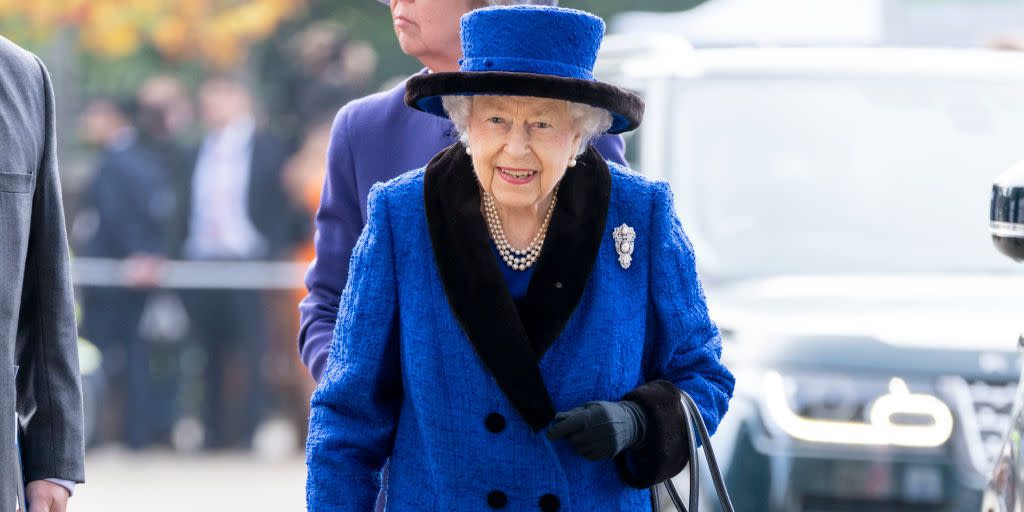It's Clear That Queen Elizabeth Won't Slow Down Until She Has To

Around 10 years ago, a briefing was held at Buckingham Palace with journalists to talk through the Queen’s schedule for the coming year. After various aspects of the itinerary were outlined, someone posed the question whether, in her mid-80s, the Queen’s program could in any way be described as being scaled back. It didn’t take long for them to be given short shrift. Does this look like a scaled back program? The message was clear; the Queen is not yet slowing down, or at least no-one is willing to say that she is.
Fast forward a decade and the picture is a little different. Since the significant announcement in 2013 that her travel was being “reviewed”—she has not taken a long-haul trip since—there have been a number of, often small, but definite concessions made publicly that the monarch’s schedule needs to be modified. She no longer wears the heavy Imperial State Crown for the State Opening of Parliament; she has not laid the nation’s wreath at the Cenotaph since 2016 but instead now watches from a nearby balcony; she handed over some patronages to younger royals when she turned 90; and recently she has been seen with a walking stick for occasional use during official engagements.
None of this should be remotely surprising, because she is 95—an age when hardly anyone else is working let alone bearing such huge public responsibility. However, as public concessions to the Queen’s age have gradually mounted up, so too has a picture of just how determined she is to continue performing her role.
Her philosophy was spelled out earlier this week—to much delight—when it emerged she had turned down an “Oldie of the Year” Award because “you are as old as you feel” and she does not believe she meets the “relevant criteria.” Just a few days later when Buckingham Palace released a statement saying that she would not be making a planned trip to Northern Ireland to “rest for the next few days” on doctor’s orders, the words “reluctantly accepted” and “disappointed” where used. Not necessary to convey the facts of the situation, this choice of language made it clear that this was not the Queen’s preference, and she wanted that to be known.
Ahead of this cancelation, she had signed off a program which featured multiple public appearances across the whole of the UK, including a speech at the opening of the Welsh Parliament, a Windsor Castle reception for the Global Investment Summit, and a trip to the races. There is also the daily behind the scenes work: she receives her red boxes of government papers every day except Christmas Day and Easter Sunday.
Around the time of Prince Charles’s 70th birthday in 2018, his profile was elevated amidst much talk of when he may take on the job he was born to do. Words like “transition” were used to describe how he is, and would continue to, gradually take on more responsibility. He even gave interviews addressing questions over what kind of king he would be. When Prince Philip died earlier this year, there was much speculation as to whether the Queen would take more of a step back without her “strength and stay” by her side. Yet, the past few weeks have made it abundantly clear that she is as enthusiastic as ever to fulfill the famous pledge that she made aged just 21 to devote her “whole life” to duty. And her bright demeanor and beaming smile also tell us how happy she is to do so.
With a record-breaking reign already under her belt and her Platinum Jubilee coming up next year, the Queen’s dedication to her role is extraordinary. If she wanted to do less, it’s obvious that this would be accepted and endorsed by those around her and by the public who she has served for so long. But, it’s increasingly clear that she will only slow down when she has to.
You Might Also Like

